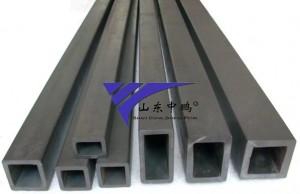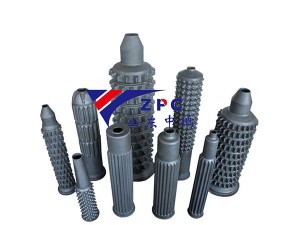Silicon carbide ceramics are a key material in a wide range of industries due to their unique properties, including high hardness, low density and excellent heat resistance. These properties make silicon carbide (SiC) an ideal choice for applications in mechanical engineering, chemical and metallurgical industries, industrial kilns and various heating equipment. This article takes an in-depth look at the many applications of silicon carbide ceramics, highlighting their importance in modern manufacturing and industrial processes.
In the field of mechanical engineering, silicon carbide ceramics are increasingly used due to their excellent hardness and wear resistance. These materials are particularly suitable for manufacturing small insulating components and wear parts that require durability and reliability. Silicon carbide can withstand high temperatures without deforming or losing structural integrity, making it ideal for use in high-performance machinery. As industry continues to demand more efficient and durable components, the role of silicon carbide ceramics in mechanical engineering is expected to expand significantly.
The chemical and metallurgical industries have also benefited greatly from silicon carbide ceramics. These materials have excellent corrosion resistance, especially to molten iron, slag and alkali metals. This property is critical in environments where traditional materials will fail, resulting in expensive downtime and maintenance. Notably, more than 65% of large blast furnaces worldwide use silicon nitride-bonded silicon carbide materials as furnace body materials. This application not only extends the service life of blast furnaces by 20-40%, but also improves operating efficiency. In addition, silicon carbide ceramics are also used as furnace linings and crucibles for metal smelting such as aluminum, copper and zinc, demonstrating its versatility in high-temperature applications.
In industrial kilns, silicon carbide ceramics play a vital role in optimizing performance and energy efficiency. The use of silicon carbide kiln furniture can significantly reduce weight and space requirements, which is particularly beneficial to industries such as light industry, building materials and electronics. The light weight of silicon carbide components helps improve energy utilization because less energy is required to heat the kiln. In addition, the excellent impact resistance of silicon carbide materials allows the firing temperature to rise faster, further improving the efficiency of kiln operation.
Silicon carbide ceramics are also integral to various heating devices used for sintering, melting, and heat treating materials. Indirect heating with gas has become a preferred method in these processes because it enables improved thermal efficiency while minimizing harmful emissions, such as nitrogen oxides (NOx). The use of silicon carbide in these heating devices not only improves performance but also complies with global efforts to reduce environmental impact. As industries strive for more environmentally friendly solutions, the demand for silicon carbide ceramics for heating applications is likely to grow.
The versatility of silicon carbide ceramics extends beyond traditional applications as they are increasingly being used in advanced technologies. For example, in the electronics sector, silicon carbide is used in the production of semiconductors and power devices. The high thermal conductivity and electrical insulation properties of silicon carbide make it ideal for high-frequency and high-temperature electronic applications. As the demand for efficient and reliable electronic components continues to grow, silicon carbide ceramics are expected to play a key role in future electronic manufacturing.
Additionally, the aerospace and automotive industries are beginning to recognize the potential of silicon carbide ceramics for lightweight, high-strength components. Silicon carbide’s ability to withstand extreme temperatures and harsh environments makes it an attractive option for applications such as turbine blades, brake discs, and other critical components. As these industries seek to improve fuel efficiency and reduce emissions, incorporating silicon carbide ceramics into their designs could significantly improve performance and sustainability.
In summary, the applications of silicon carbide ceramics are wide-ranging, thanks to their unique properties and performance advantages. From mechanical engineering to chemical processing, industrial kilns and advanced electronics, silicon carbide ceramics have proven to be an indispensable part of modern manufacturing. As technology continues to advance, the potential for silicon carbide ceramics to contribute to innovative solutions and sustainable practices will only increase. The future of silicon carbide ceramics is promising, and continued research and development are paving the way for new applications and enhanced performance in various fields.
Post time: Mar-29-2025

